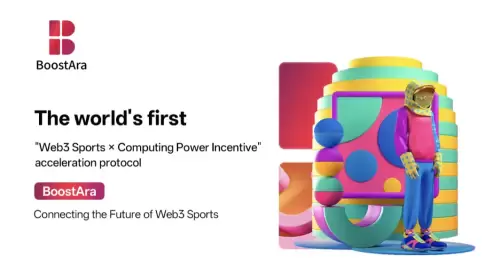 |
|
 |
|
 |
|
 |
|
 |
|
 |
|
 |
|
 |
|
 |
|
 |
|
 |
|
 |
|
 |
|
 |
|
 |
|
作为代理AI系统(大型语言模型(LLMS)功率自主,目标驱动的代理)从实验原型迅速过渡

Agentic AI systems, where large language models (LLMs) power autonomous, goal-driven agents, are rapidly transitioning from experimental prototypes to production-ready services. These agents read databases, trigger API calls, write to software-as-a-service (SaaS) platforms, and stitch together workflows across systems that weren't necessarily designed to coordinate. A fundamental question arises as these systems evolve: how should identity and access be handled when no human is in the loop?
代理AI系统,大型语言模型(LLMS)功率自主,目标驱动的代理正在迅速从实验原型过渡到生产准备就绪的服务。这些代理商读取数据库,触发API调用,写入软件即服务(SaaS)平台,以及跨系统跨系统设计的工作流程,这些工作流程不一定是为了坐标而设计的。随着这些系统的发展,就会出现一个基本问题:当没有人进入循环时,应该如何处理身份和访问?
Initially introduced by Anthropic, the Model Context Protocol (MCP) aims to be the lingua franca for agentic interoperability, providing a standardized interface for agents to interact with external tools, prompts, and resources. However, as agent actions become more powerful, and potentially dangerous, robust, flexible, and secure access control becomes essential.
最初是由拟人化引入的,模型上下文协议(MCP)旨在成为代理互操作性的通用语言,为代理提供与外部工具,提示和资源进行交互的标准化接口。但是,随着代理行动变得越来越强大,可能是危险,健壮,灵活和安全的访问控制变得至关重要。
The recently released MCP Authorization Specification proposes an essential first step: standardizing how clients obtain authorization to access protected MCP resources using OAuth 2.1 and PKCE (Proof Key for Code Exchange).
最近发布的MCP授权规范提出了一个重要的第一步:标准化客户如何获得使用OAUTH 2.1和PKCE访问受保护的MCP资源的授权(代码交换的证明密钥)。
This post unpacks what the spec introduces, why PKCE was chosen, how the flow works, and why authentication remains a critical missing piece, especially in non-human entity interactions.
这篇文章解开了规格介绍的内容,为什么选择PKCE,流动方式的工作原理以及为什么身份验证仍然是关键的缺失部分,尤其是在非人类实体交互中。
Why Agentic AI Needs a New Authorization Model
为什么代理AI需要新的授权模型
In traditional web architectures, authorization typically involves browser-based login flows, session cookies, or OAuth tokens issued after a human clicks "Authorize." Agentic AI systems present unique authorization challenges because they make autonomous API calls driven by LLMs, without direct user involvement.
在传统的Web体系结构中,授权通常涉及基于浏览器的登录流,会话cookie或在人类点击“授权”后发出的OAuth代币。代理AI系统提出了独特的授权挑战,因为它们在没有直接用户参与的情况下驱动了由LLMS驱动的自动API调用。
These agents interpret prompts and programmatically plan tasks, necessitating strong API security measures. Typically long-lived, stateless, and dynamic, these agents operate without user oversight for access approval or execution guidance.
这些代理商解释了提示和编程计划的任务,需要采取强大的API安全措施。通常,这些代理商通常长寿,无状态和动态,无需用户监督以访问批准或执行指导。
This change creates some challenges:
这种变化带来了一些挑战:
The MCP authorization specification attempts to impose structure on one part of this problem: how should an MCP client discover and obtain authorization to access protected resources?
MCP授权规范试图将结构强加于此问题的一个部分:MCP客户端应如何发现并获得授权以访问受保护的资源?
Goals of the MCP Authorization Specification
MCP授权规范的目标
The spec introduces a consistent, standards-based authorization workflow for MCP clients. Its goals are to:
该规格为MCP客户端介绍了一致的基于标准的授权工作流程。它的目标是:
What's in a PRM Document?
PRM文档中有什么?
A PRM document is a JSON-based resource returned by an MCP server when access is denied. It typically includes:
PRM文档是拒绝访问时由MCP服务器返回的基于JSON的资源。它通常包括:
免责声明:info@kdj.com
所提供的信息并非交易建议。根据本文提供的信息进行的任何投资,kdj.com不承担任何责任。加密货币具有高波动性,强烈建议您深入研究后,谨慎投资!
如您认为本网站上使用的内容侵犯了您的版权,请立即联系我们(info@kdj.com),我们将及时删除。
-

- 比特币流动性,渗透区和投资者的兴趣:深入潜水
- 2025-08-03 14:00:00
- 在市场测试中,探索渗透区域中比特币流动性的激增,并在市场测试中强烈的投资者信心。
-

- Web3,体育和计算能力:新的舞会
- 2025-08-03 13:59:21
- 探索Web3,计算能力和Boostara等创新平台如何彻底改变体育行业,为运动员和球迷创造新的机会。
-

-

- 加密鲸鱼,模因硬币和月光镜头:在2025年野外航行
- 2025-08-03 13:45:34
- 探索2025年加密鲸,模因硬币和月球批发的融合。在这种动态景观中发现趋势,见解和潜在机会。
-

- 香港Stablecoin许可证:紧紧挤压?
- 2025-08-03 13:24:03
- 香港对Stablecoin监管的方法是严格的,这表明数字资产创新与金融稳定之间的平衡谨慎。这对未来意味着什么?
-

-

- XRP,FLR和突破潜力:嗡嗡声是什么?
- 2025-08-03 13:17:29
- 深入研究XRP的挣扎,FLR的潜力以及突破是否即将到来。获取最新的见解和分析。
-

-






























































